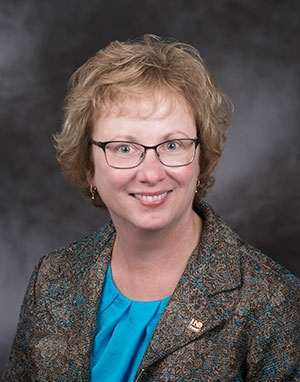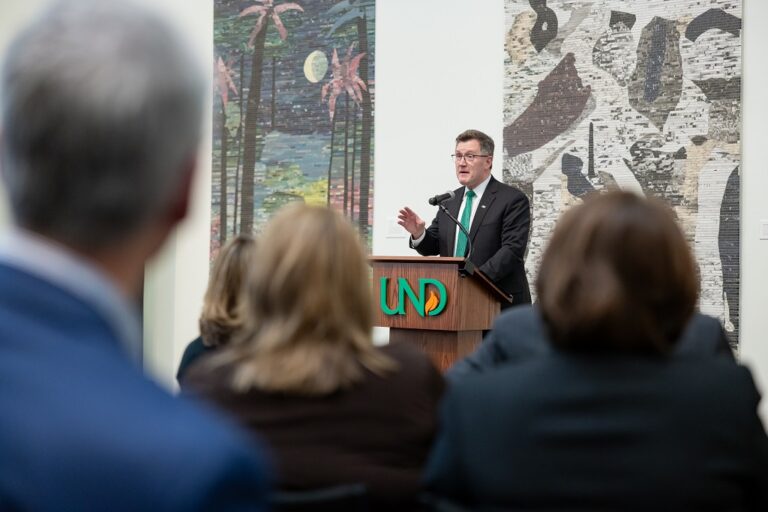The right revenue?
UND forming a working group to recommend appropriate tuition-and-fee model, based on NDUS framework

The University of North Dakota soon will convene a new working group to study proposals for a new tuition model unique to this University.
UND Vice President for Finance & Operations Alice Brekke said her office currently is in the process of sending out invitations to individuals on campus to serve on the UND tuition working group. The first meeting should occur before the end of the semester, with a target for recommendations to be completed by the end of March 2017.
UND students will have significant representation on the working group, Brekke said.
The working group, using flexibilities provided by a newly unveiled North Dakota University System framework, will have the task of recommending the right model that generates the right revenue for UND’s needs moving forward.
“This is an opportunity to have a conversation internally on what model will work best for UND and what we’re going to have to do to support our programs at the level of a flagship university,” Brekke said.
A significant source of revenue for all schools, tuition and fees accounts for about 30 percent of institutional revenue on an annual basis at UND.
According to data from the NDUS’ Student Affordability Report (January 2016), tuition and fees at UND/NDSU regional comparison institutions are nearly 9 percent higher for an in-state resident undergrad than they are for comparable students at UND.
The regional average is derived from information from counterpart doctoral/research institutions in Arizona, Colorado, Idaho, Minnesota, Nevada, New Mexico, Oregon, South Dakota, Utah, Washington and Wyoming.
Tuition models have been under discussion both at UND and at the North Dakota University System level for several years. And the State Board of Higher Education’s approach to setting tuition in the system has evolved over time with a renewed focus on strategic priorities.
But in its last session, the North Dakota Legislature capped tuition increases for NDUS schools. UND’s tuition increase cap was set at 2.5 percent per year.
“The concern about affordability for students was certainly a motivating factor for this action being taken by the Legislature with a clear message that institutions need to be more efficient and control costs, not just pass higher costs on to students,” Brekke said.
Since that time, the NDUS has been wrestling with ways to tweak the handling of tuition and fees to balance factors such as affordability, market competitiveness, attracting people to the state to fill workforce needs, generating revenue to support quality programs, and ramping up new programs that meet state priorities.
New framework

In October, the SBHE approved recommendations from its Tuition and Fees, Waivers Study Group that provided a consistent framework across the system and yet allowed flexibility to tailor tuition and fees at individual institutions.
UND was represented on the 11-member Study Group by Brekke.
The Study Group recommended a framework comprising five principles for NDUS institutions to use as they proceed in refining their own on-campus models and rates. The framework addresses per-credit-hour thresholds, encourages blending together of tuition and fees to the greatest extent possible, makes online tuition rates and on-campus tuition rates more consistent, allows schools to consider variable tuition rates for unique academic programs (UND already does this for law and medicine, for example) and simplifies how tuition is assessed based on residency.
It should be noted that implementation of the framework is contingent on the ability for NDUS schools to adjust their respective tuition and fees above current legislatively mandated caps.
For UND, the framework would allow the school to continue charging a per-credit-hour rate up to 12 credits. As a part of the NDUS Working Group, UND favored retaining existing residency tuition rates (factors) instead of lowering them. The Working Group ultimately recommended setting residency rate floors for various groups of out-of-state students. This allows UND and other NDUS schools to recommend higher factors, taking into consideration program mix/quality, market and other factors.
The next step for UND is the formation of the tuition working group to refine and propose a tuition model that is specific to the institution.
Ultimately, any new model and rates that are recommended for UND and other NDUS institutions would have to be approved by the SBHE, with full implementation no later than the fall of 2019.


